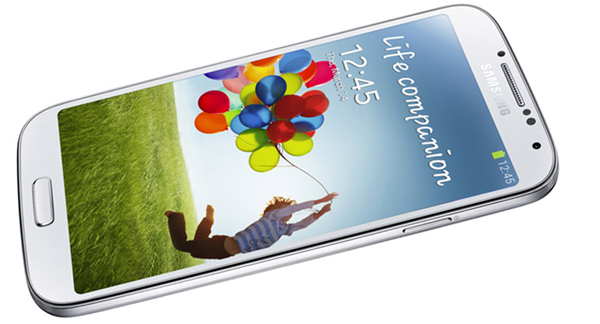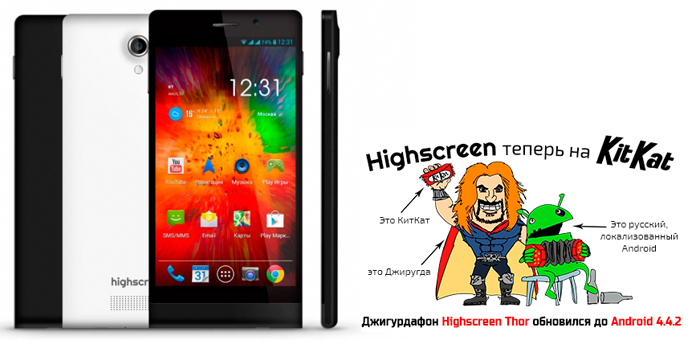Changing the interface of mobile devices in new firmware: evil or good?
I first encountered a fundamental change in the interface of a mobile device in the case of the Cowon S9 media player - there was such an excellent pocket player with an AMOLED screen. So, at the time of receiving this gadget for personal use, there was a firmware in it, say, version 1.0 (I don’t remember exactly).

Cowon s9
Then there were 1.1, 1.2, 1.3 and so on, and in some 1.4 the developers took and carefully reworked the interface, adding a wagon of new icons without signatures, plus changing the location of many old icons. Yes, in terms of functionality, it is better. And - it's a young thing - within a few days I have mastered this new interface with grief in half. But the sediment remained: it seemed that Cowon did not think very well before writing another software for the flagship player. Because to impose a new user experience like this - it is not very correct. Yes, new features are needed and important, but please, without radical changes in the interface.
')
Since then, one and a half hundred different gadgets have passed through me, and the overwhelming majority of them have been updated one way or another during the operation. I can remember Motorola RAZR XT910 from the unpleasant - when switching from Android 2.3.6 to Android 4.0.4, decently branded Motorola functions and applications disappeared from the device, plus the interface also changed a little. Not as critical as in the case of the player, but still. On the other hand, here it is quite understandable: many applications in the field of applications and interface, applied in the firmware from Android 2.3.6, became the base for Android 4.0.4. Therefore, it was logical to replace the Motorola solutions with standard ones from the operating system.

Motorola RAZR XT910
An example of a different approach - Samsung Galaxy S4. When switching from Android 4.2.2 to Android 4.3, and then to Android 4.4.2, the TouchWiz interface remained almost unchanged. And the 4.4.2 that you see in S4 is different from what is installed in the latest generation devices - the Galaxy S5 and, for example, the Galaxy K Zoom. I guess Samsung didn’t regret a few ryushechek for an elderly (but still being sold!) Smartphone, the reason is different: the developers did not change the Quartet interface because the user didn’t have to get used again.

Samsung Galaxy S4
Another example is Highscreen Thor on the 8-core MediaTek MT6592, which was the first in Russia to receive an update from Android 4.2.2 to 4.4.2. There is information that the developers planned to introduce some customization in the new firmware - redraw a series of icons, a dialer application, and so on. But then, appreciating the differences between what was and what became, they decided not to implement these innovations. Those who love the "naked" Android, they still do not like, and those who love third-party launcher, put them on their own.

Highscreen thor
Well, the reason for writing this post was the visit of my friend who uses the Lenovo P780. Initially, this device came with Android 4.2.1, supplemented with a proprietary shell in the style of Go Launcher EX (maybe this was it in some version specifically for Lenovo). And about a month ago, an update from Android 4.4.2 suddenly flew for it. Okay, he would just change the OS version, but no, everything is more complicated: the shell was replaced with another one. Very, very different: it now does not have a separate application menu, there are only desktops - just like an iPhone. Dialer, curtain notifications, settings menu - changed everything, and drastically.

Lenovo P780: it was and became
I note that my friend doesn’t know much about technology and has been using the P780 for about a year now. He did not feel any new and unexplored feelings, and the appearance of the interface after updating it literally shocked. Not that it is less beautiful, not at all. The icons are cute, but only the lack of an application menu has upset him greatly. You cannot roll back to 4.2.1 with the old launcher without certain dances with a computer and cable. And will a person who is far from technology do this? Can it? Is not a fact.
I will not draw any conclusions from the above - I suspect that there are quite a few readers who are not attracted to the unknown in the field of IT. Yes, and I myself, to be honest, am one of them, and such a new firmware for the P780 would never upset me. But the mass user probably thinks differently.
What do you think about this? Should we stick to the original course in the interfaces or is there no crime in their sudden change?

Cowon s9
Then there were 1.1, 1.2, 1.3 and so on, and in some 1.4 the developers took and carefully reworked the interface, adding a wagon of new icons without signatures, plus changing the location of many old icons. Yes, in terms of functionality, it is better. And - it's a young thing - within a few days I have mastered this new interface with grief in half. But the sediment remained: it seemed that Cowon did not think very well before writing another software for the flagship player. Because to impose a new user experience like this - it is not very correct. Yes, new features are needed and important, but please, without radical changes in the interface.
')
Since then, one and a half hundred different gadgets have passed through me, and the overwhelming majority of them have been updated one way or another during the operation. I can remember Motorola RAZR XT910 from the unpleasant - when switching from Android 2.3.6 to Android 4.0.4, decently branded Motorola functions and applications disappeared from the device, plus the interface also changed a little. Not as critical as in the case of the player, but still. On the other hand, here it is quite understandable: many applications in the field of applications and interface, applied in the firmware from Android 2.3.6, became the base for Android 4.0.4. Therefore, it was logical to replace the Motorola solutions with standard ones from the operating system.

Motorola RAZR XT910
An example of a different approach - Samsung Galaxy S4. When switching from Android 4.2.2 to Android 4.3, and then to Android 4.4.2, the TouchWiz interface remained almost unchanged. And the 4.4.2 that you see in S4 is different from what is installed in the latest generation devices - the Galaxy S5 and, for example, the Galaxy K Zoom. I guess Samsung didn’t regret a few ryushechek for an elderly (but still being sold!) Smartphone, the reason is different: the developers did not change the Quartet interface because the user didn’t have to get used again.

Samsung Galaxy S4
Another example is Highscreen Thor on the 8-core MediaTek MT6592, which was the first in Russia to receive an update from Android 4.2.2 to 4.4.2. There is information that the developers planned to introduce some customization in the new firmware - redraw a series of icons, a dialer application, and so on. But then, appreciating the differences between what was and what became, they decided not to implement these innovations. Those who love the "naked" Android, they still do not like, and those who love third-party launcher, put them on their own.

Highscreen thor
Well, the reason for writing this post was the visit of my friend who uses the Lenovo P780. Initially, this device came with Android 4.2.1, supplemented with a proprietary shell in the style of Go Launcher EX (maybe this was it in some version specifically for Lenovo). And about a month ago, an update from Android 4.4.2 suddenly flew for it. Okay, he would just change the OS version, but no, everything is more complicated: the shell was replaced with another one. Very, very different: it now does not have a separate application menu, there are only desktops - just like an iPhone. Dialer, curtain notifications, settings menu - changed everything, and drastically.

Lenovo P780: it was and became
I note that my friend doesn’t know much about technology and has been using the P780 for about a year now. He did not feel any new and unexplored feelings, and the appearance of the interface after updating it literally shocked. Not that it is less beautiful, not at all. The icons are cute, but only the lack of an application menu has upset him greatly. You cannot roll back to 4.2.1 with the old launcher without certain dances with a computer and cable. And will a person who is far from technology do this? Can it? Is not a fact.
I will not draw any conclusions from the above - I suspect that there are quite a few readers who are not attracted to the unknown in the field of IT. Yes, and I myself, to be honest, am one of them, and such a new firmware for the P780 would never upset me. But the mass user probably thinks differently.
What do you think about this? Should we stick to the original course in the interfaces or is there no crime in their sudden change?
Source: https://habr.com/ru/post/234871/
All Articles